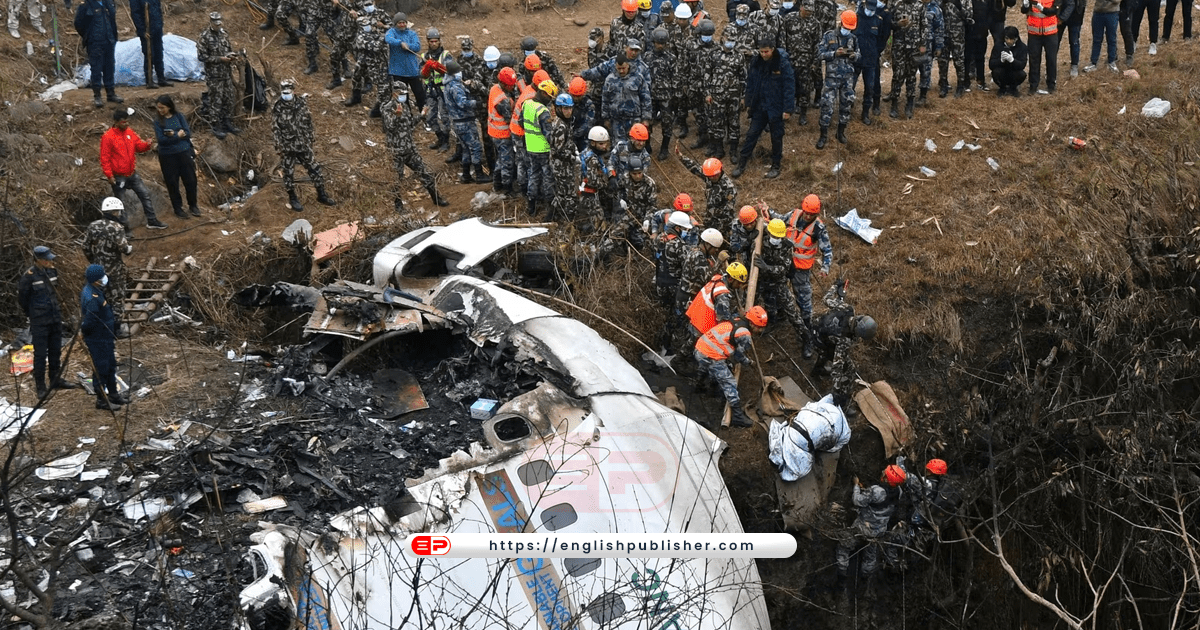The Nepal plane crash was caused by the pilot’s mistake of cutting off the engine power
A report by government-appointed investigators investigating the plane crash near Nepal’s Pokhara airport in January this year said the Nepal plane crash, which killed 72 people, was likely It happened due to pilot’s mistake of cutting off engine power.
He says that ‘due to which the aircraft lost its engine power and the aircraft suffered an aerodynamic stall, i.e. due to the air pressure, the aircraft’s balance was disturbed.
It should be remembered that at the beginning of this year, on January 15, a passenger plane of Yeti Airlines was flying from Kathmandu to Pokhara when it crashed while landing.
It was declared as Nepal’s worst air crash in the last 30 years.
It should be noted that the plane was carrying four crew members and 68 passengers, including at least 15 foreign nationals. Among the passengers, 53 Nepalis, five Indians, four Russians and two Koreans were on board. One passenger each from Ireland, Australia, Argentina and France was also on board.
The ATR 72 aircraft that was destroyed in the accident was on its third flight between Kathmandu and Pokhara on January 15.
The aircraft crashed in the Siti river gorge, just 1.5 km from the Pokhara airport.
“Due to its speed, the plane flew for 49 seconds before hitting the ground,” aeronautical engineer Deepak Prasad Bastola, a member of the air crash investigation panel, told Reuters.
He added that the pilots may have kept the condition lever, which controls power, in the feathering position instead of selecting the flap lever.
“Because of this, the engine runs without generating power and does not generate thrust,” Bastula explained.
The report said that “after both engines of the aircraft were mistakenly powered up, the flight crew failed to identify the problem and take corrective action despite warnings from the crew alerting panel.”
The report also listed lack of adequate technical and skill-based training of aircrew (pilots), excessive workload and stress, and non-compliance with standard operating procedures as factors in the accident.
The report added that the aircraft was properly maintained, had no malfunctions or technical problems and the cockpit crew was competent and competent as per the rules and regulations of the Civil Aviation Authority of Nepal.
More than a dozen investigators from the United States, Canada, France and Singapore were involved in the investigation of the accident.
Local resident Devita Kal told the BBC that she somehow managed to reach the crash site shortly after 11:00 a.m. local time (05:15 GMT) after seeing the plane fall from the sky.
He said that when I reached there, there was already a crowd at the accident site. Smoke was rising from the plane’s flames and soon the helicopters arrived.
“The pilot tried his best not to hit the population or any houses,” Devita Kal added.
The European Union has banned Nepalese airlines from its airspace for the past decade due to security concerns.
Air accidents are not uncommon in Nepal due to dangerous conditions created by remote airports and sudden changes in weather.
Last May, Yeti Airlines-owned Tara Air Flight 197 crashed off a mountain, killing 22 passengers and crew.
